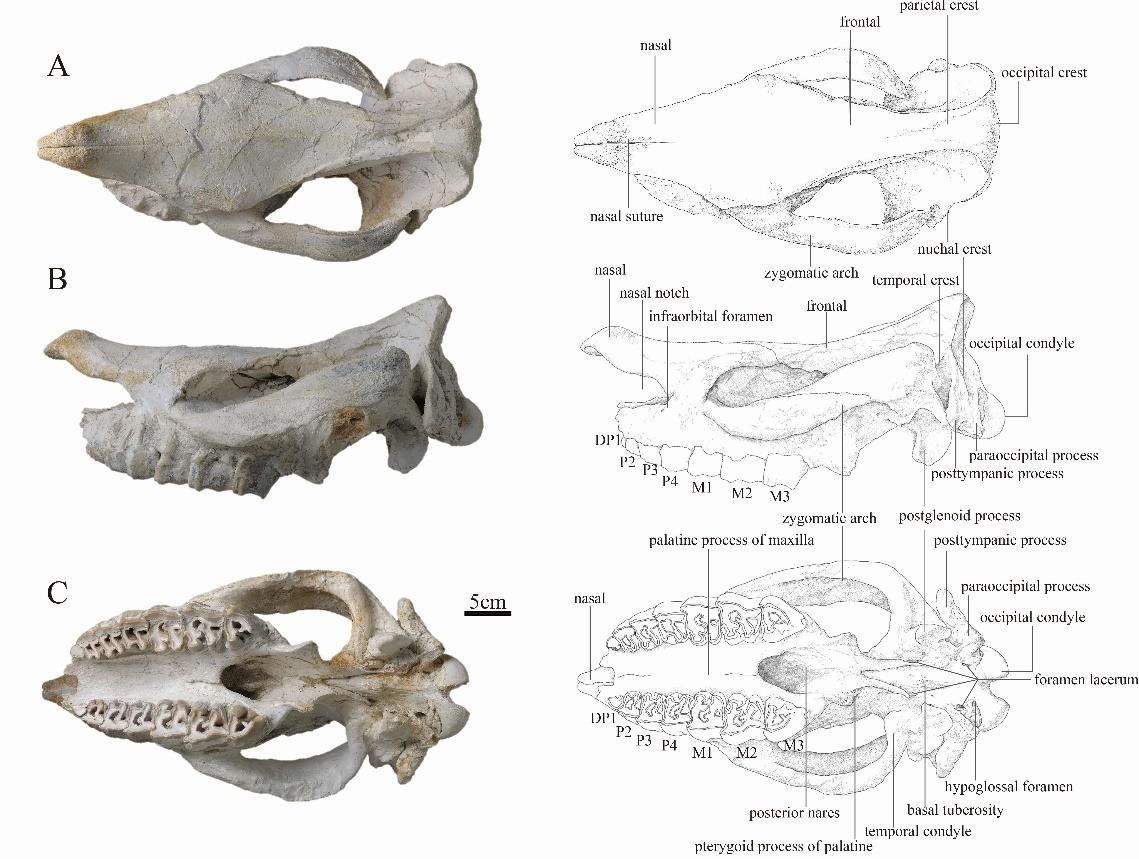 This illustration released by the Institute of Vertebrate Paleontology and Paleoanthropology under the Chinese Academy of Sciences shows Prosantorhinus yei.
This illustration released by the Institute of Vertebrate Paleontology and Paleoanthropology under the Chinese Academy of Sciences shows Prosantorhinus yei.
BEIJING - Chinese researchers have for the first time discovered a rhinoceros fossil dating back 14 million years in East Asia, providing important evidence for the animals' migration to East Asia.
Prosantorhinus is a genus of the small extinct teleoceratine rhinoceroses with shortened limb bones, widely distributed in Europe. However, the Asian evolution of the genus has remained unclear due to the lack of related fossil records.
Researchers from the Institute of Vertebrate Paleontology and Paleoanthropology under the Chinese Academy of Sciences have conducted morphological research and discovered a new rhinoceros fossil dating back to the Middle Miocene Epoch in China's Ningxia Hui autonomous region.
ALSO READ: Stem cells give hope for revival of Malaysia's extinct rhinos
 This photo released by the Institute of Vertebrate Paleontology and Paleoanthropology under the Chinese Academy of Sciences shows biological specimen of Prosantorhinus yei's skull.
This photo released by the Institute of Vertebrate Paleontology and Paleoanthropology under the Chinese Academy of Sciences shows biological specimen of Prosantorhinus yei's skull.
A phylogenetic analysis based on 282 morphological characters scored for 36 taxa reveals that it is a relatively derived taxon in the genus Prosantorhinus. Researchers named the new specie as Prosantorhinus yei sp. nov.
The new specimen is characterized by a well-preserved full-grown skull with thickened and elevated nasal bones supporting a small horn.
The discovery indicates that the paleogeographic distribution of Prosantorhinus is very wide, spanning from Europe to southern Pakistan and China, which means that their migration was not limited by ecological and geographical obstacles in Eurasia, according to Deng Tao, a researcher with the Institute.
READ MORE: Tianjin museum's link to past deeper than its exhibits
The study has been published in the Zoological Journal of the Linnean Society.


